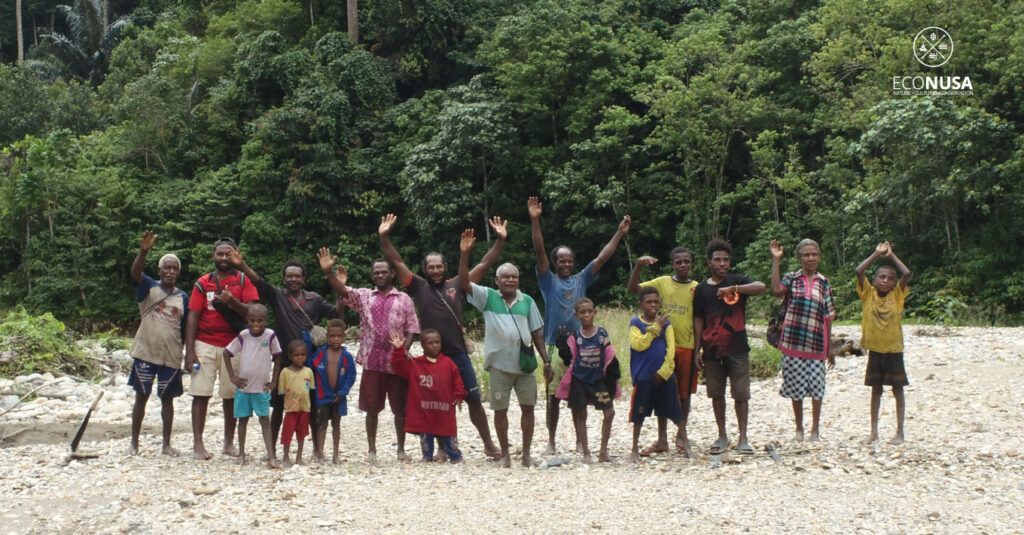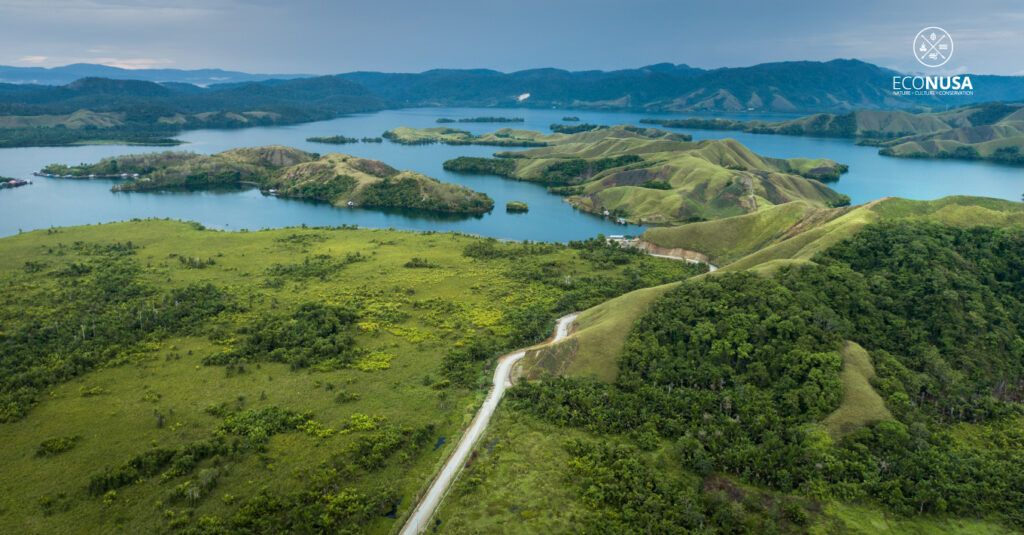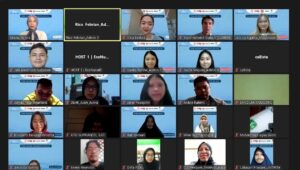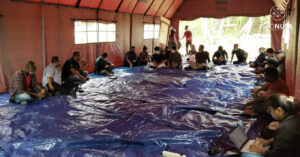
Climate change has a significant impact on human life. Many crises are caused by the destruction of nature and climate change. Whether we realize it or not, our actions also contribute to the rising temperatures on earth.
“Remember, globally we are facing the triple planetary crisis, namely climate change, increasing levels of pollution, and biodiversity loss. Our future development steps will determine the future of the Land of Papua and the Earth generally,” said Erik Armundito, Director of Environment at the National Development Planning Agency (Bappenas) in his presentation at the Low Carbon Development Plan Document (RPRKD) for Papua Province Dissemination meeting, 21 February 2022.
The three planetary crises have resulted in an increase in natural disasters, such as extreme weather, high waves, floods, landslides, droughts, abrasions, and tornadoes. In his presentation, Erik mentioned that the various natural disasters that occurred had caused unavoidable losses up to IDR 22.8 trillion per year. The disasters that occurred have also claimed many lives, many people have lost their homes, and have left trauma to many people.
Read also: Low Carbon Development Plan Document: West Papua Province’s Step Ahead for Sustainable Development
“Therefore, the government through Bappenas is pushing the implementation of several environmental strategic actions to support economic transformation towards a green economy,” said Erik. As a follow-up to the Government of Indonesia’s commitment to achieving a net zero emissions target by 2060, all regions are being encouraged to transform their development plans with a low-carbon approach, including in Papua Province.
Low-carbon and climate-resilient development is the “backbone” in Indonesia’s economic transformation towards a green economy. Based on the translation of article 3.4 of the United Nations Framework Convention on Climate Change, namely the integration of low-carbon development and climate resilience in the 2020–2024 National Medium-Term Development Plan (RPJMN) Low Carbon and Climate Resilience Development as National Priority Number 6 and becomes the policy direction of the Government Work Plan in 2023.

Papua Regional Low Carbon Development Plan Document
The memorandum of understanding (MoU) between the Provincial Government of Papua, the Provincial Government of West Papua, and the National Development Planning Agency was signed on August 19, 2019. Implementation continued with a series of activities including forming a Low Carbon Development Planning Working Group (PPPRK), filling in data into the Action Planning and Monitoring Application (AKSARA), as well as the preparation of the Regional Low Carbon Development Plan (RPRKD) document for Papua Province by stakeholders guided by Cenderawasih University and the EcoNusa Foundation.
Read also: COP27 Egypt: Indonesia Leads by Examples
Elisabeth Wambrauw, lecturer at the University of Papua and a member of the Papua RPRKD document development team, explained that the preparation of this document aims to determine the reduction of greenhouse gas emissions with three alternative policy scenarios, namely baseline scenario, fair and ambitious scenarios in 2030 (according to the target of sustainable development goals/ SDG’s), 2045 (Indonesia Gold-Vision), and 2060 (based on net zero emission targets). The RPRKD Papua document is an important step and makes Papua a pilot province for other regions in implementing Indonesia’s efforts toward a climate-resilient country. This document will become a reference for local governments to conduct various low-carbon activities through five priority sectors, namely the energy sector, industry, waste and circular economy, blue carbon, as well as land use and agriculture.
In this document, the drafting team presents the results of calculating greenhouse gas emissions in the 2010-2060 time period using the system dynamic analysis method. Based on the results of these calculations, the forest sub-sector has the greatest opportunity and potential to reduce emissions to net zero emissions, through policies that limit permits for the use of primary forests. From existing calculations, emissions can be reduced by up to 80 percent with a fair scenario and 140 percent with an ambitious scenario.
Read also: Good News, Gelek Ulim Abgies Pela Customary Territory Receives Government Recognition
In the energy sector, policy interventions are focused on shifting towards using clean energy and implementing energy efficiency. The fair scenario and the ambitious scenario are carried out with policies on the utilization of new and renewable energy, as well as energy efficiency. Meanwhile, from the waste treatment sector, the results of the analysis show that the effect of reducing emissions is not too significant. However, it is still necessary to treat domestic waste by implementing a circular economy and the 9R principles (refuse, rethink, reuse, repair, refurbish, remanufacture, repurpose, and recycle).
The analysis of RPRKD uses the Mauri Decision Making Framework approach, which is further divided into four dimensions, namely Mauri of Ecosystem for the environmental dimension, Mauri of Community as the social dimension, Mauri of culture for cultural aspects, and Mauri of Whanau which covers economic aspects. Elisabeth explained that this approach was chosen as the framework in preparing the Papua RPRKD document because it accommodates the four aspects needed in designing sustainable development policy directions in the Land of Papua.
Read also: Indonesia-Norway New Deal Can Boost FOLU Net Sink Target Achievement
According to the results of the analysis and calculations by the drafting team, the RPRKD Papua document provides several policy recommendations, namely the need for the private sector’s contribution in the implementation of low-carbon programs; opening opportunities for carbon trading through incentive mechanisms and involving the private sector as providers and buyers of carbon; and the need for low carbon development planning at district and city levels.
Achieving Indonesia’s sustainable and low-carbon development, especially in the Land of Papua, needs collaborations and commitment from many parties. Therefore, our support and commitment to monitor its implementation are important in order to achieve a better life in the future.
Editor: Nur Alfiyah and Swinny Adestika







